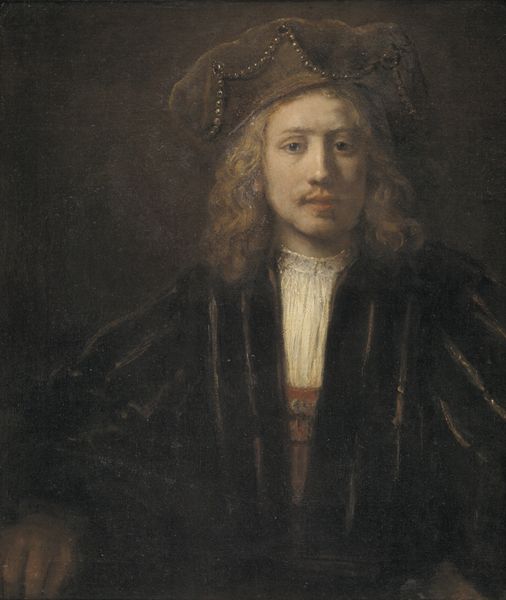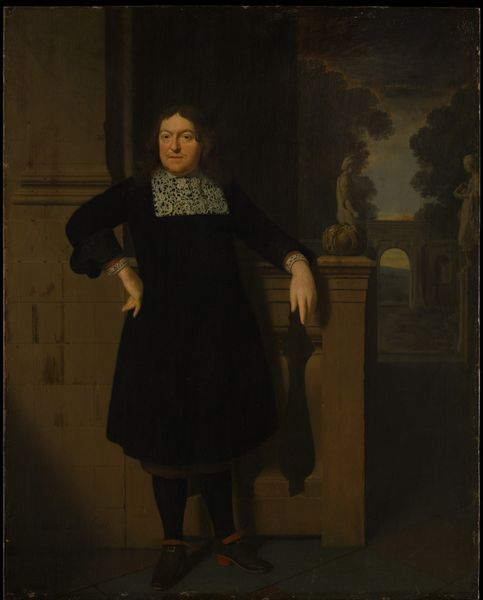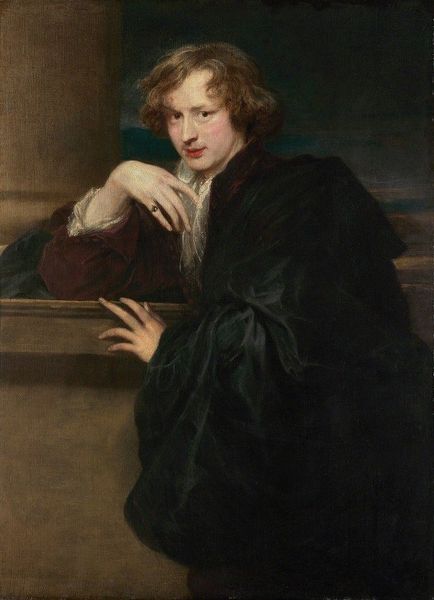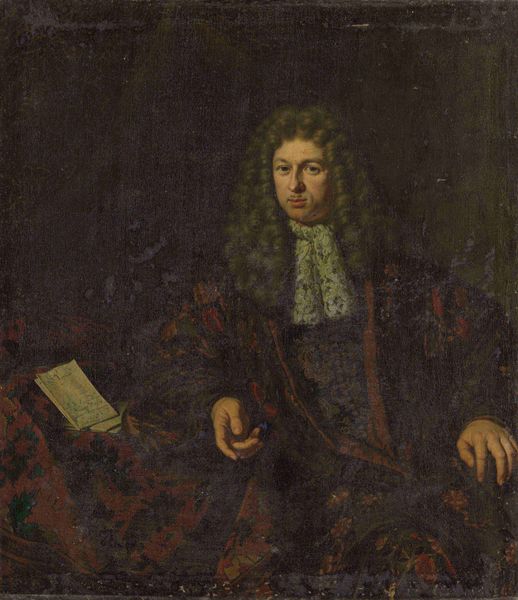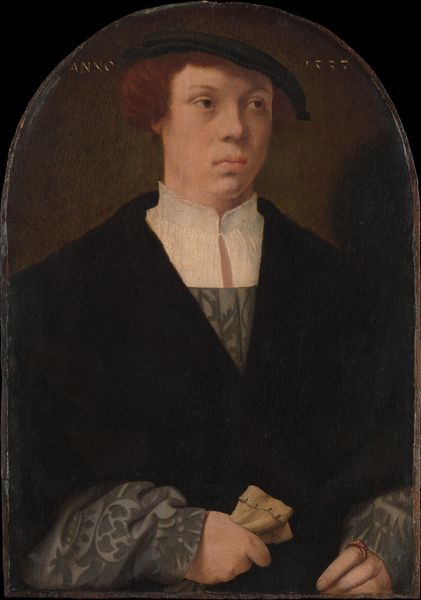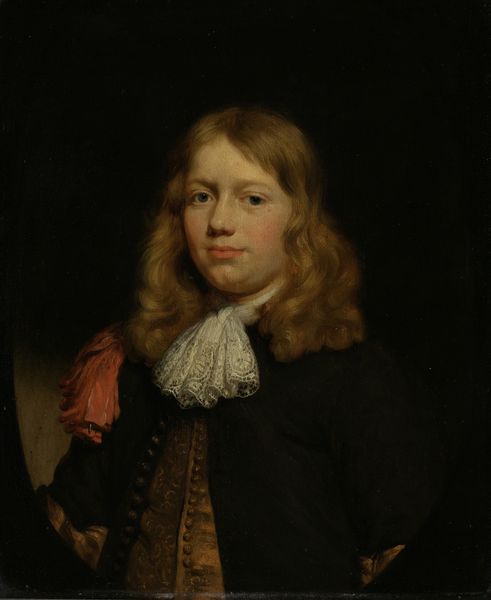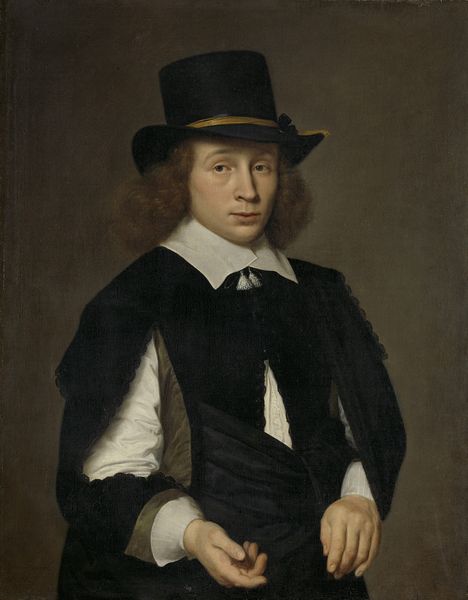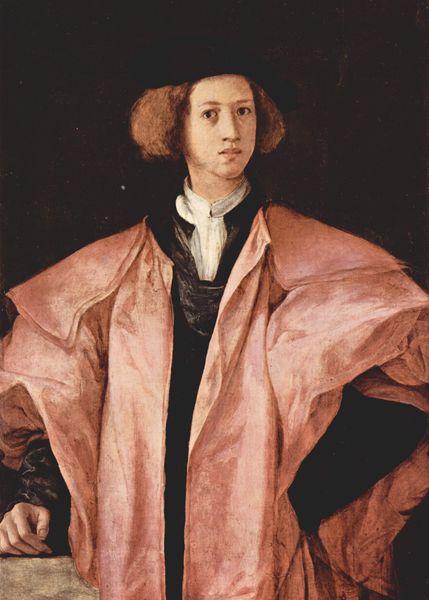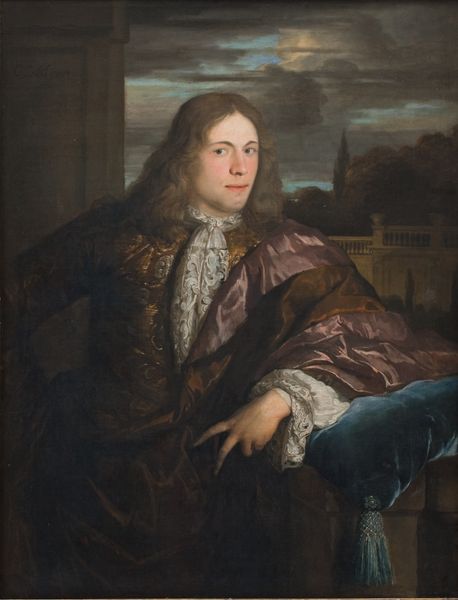
painting, oil-paint
#
portrait
#
baroque
#
painting
#
oil-paint
#
history-painting
Dimensions: support height 114 cm, support width 84.5 cm, support thickness 4 cm
Copyright: Rijks Museum: Open Domain
Curator: What strikes me immediately about this painting is the palpable sense of unease and anticipation. Editor: Ah, yes, a feeling that’s very much aligned with the Baroque style we see represented here in “Portrait of Hendrik Liberti (c. 1610-c. 1669)". The painting is attributed to Anthony van Dyck and it is believed to date around 1700. It’s an oil on canvas currently housed here at the Rijksmuseum. Curator: Van Dyck! That name is immediately associated with courtly portraiture. One has to remember the labour behind this artistic endeavour; the mining of pigments, the preparation of the canvas, Van Dyck’s training in the studio—all of this coalescing into a depiction of this man, Hendrik Liberti, who may have occupied some place within this network of artistic production or patronage. Who was Liberti exactly, and what was his relationship with the artist and their patron? These social factors define much about the purpose this portrait served at the time. Editor: The figure is arresting, isn't it? Look at the composition, that sharp diagonal created by his arm leaning against what appears to be a stone ledge, countered by the tilt of his head. It directs our gaze precisely to the man's expression – wide-eyed, maybe a little frightened. And the colour palette is so deliberately muted, a symphony of dark greens, browns, and greys. The only real spot of brightness is his face and collar. The soft modelling is designed to highlight that. Curator: We also have to consider that what is visually suggested comes at the product of exploitation of materials; in the form of oil paint but also of the work needed to render those effects visible to us, and ultimately to project the sitter to society at the time, to make sure that he had the desired cultural standing and a social position. What social contracts needed to be forged to get him depicted here, the amount of work to prepare a space to depict his features for all future to admire this figure? Editor: Interesting thought, but I can't help but think about the fact that without his skillful use of chiaroscuro and tonal variation, without Van Dyck carefully staging and modeling his features, would that purpose, or his “standing”, truly hold any weight for the contemporary spectator? The portrait has that baroque tension. A single image, capable of speaking across centuries, simply through formal visual cues. Curator: Perhaps it all speaks together of how a historical figure wanted to be seen and perceived back then! Editor: Precisely! And for me the magic lies in the very way in which van Dyck’s hand makes that enduring dialogue possible through form, light and shadow.
Comments
No comments
Be the first to comment and join the conversation on the ultimate creative platform.
